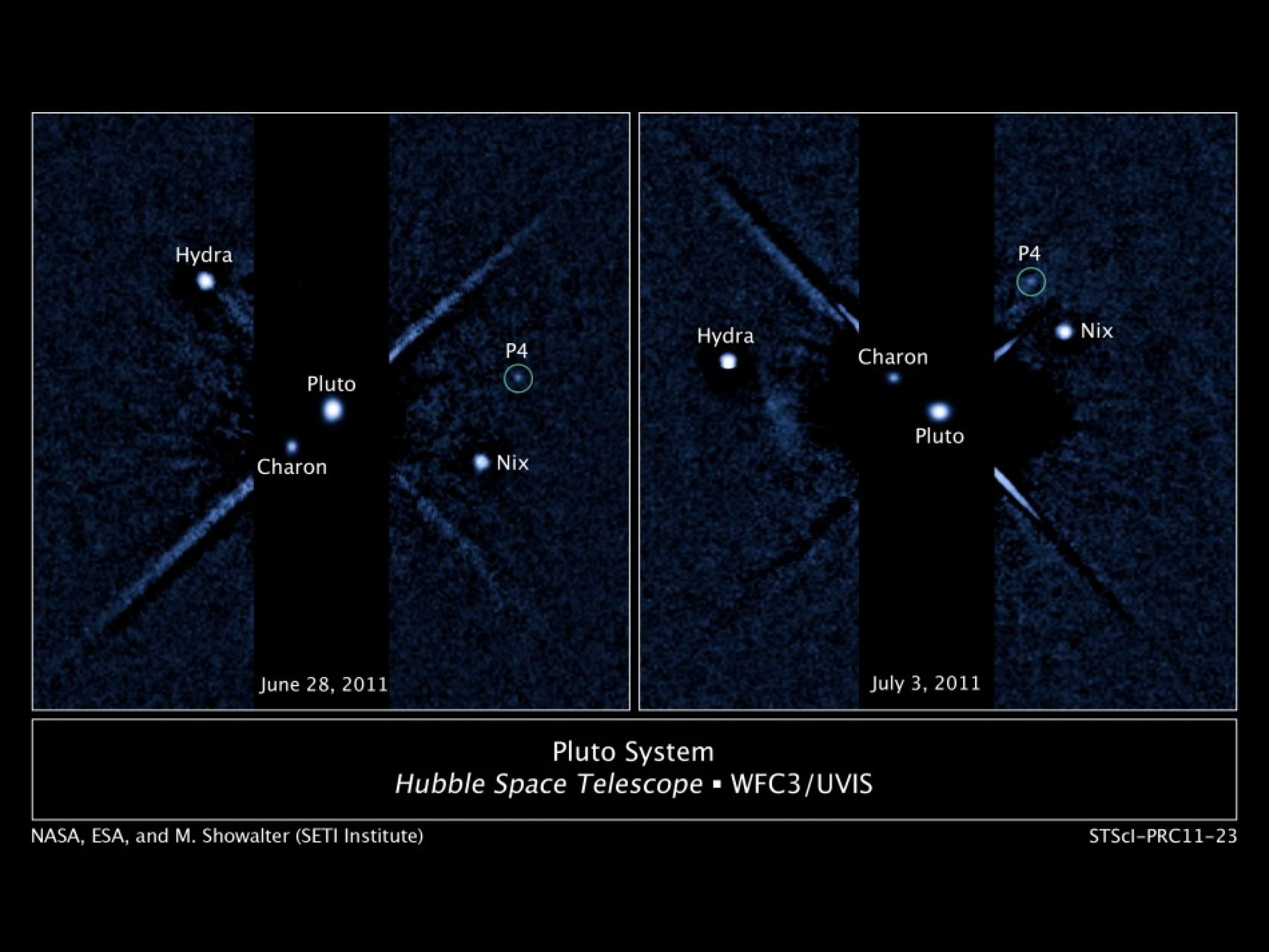Pluto Has Four Moons, Hubble Photos Show
The distant, icy dwarf planet Pluto has been hiding its fourth moon -- temporarily designated P4 -- that was discovered by NASA astronomers, using the Hubble Space Telescope's Wide Field Camera 3 ultraviolet visible instrument.
This is a fantastic discovery, said New Horizons’ principal investigator Alan Stern of the Southwest Research Institute in Boulder, Colorado. Now that we know there's another moon in the Pluto system, we can plan close-up observations of it during our flyby.
The tiny new moon, which was uncovered in a Hubble survey searching for rings around the dwarf planet, is located between the orbits of Nix and Hydra, which Hubble discovered in 2005. Charon was discovered in 1978 at the U.S. Naval Observatory and first resolved using Hubble in 1990 as a separate body from Pluto, NASA said in a statement.
The tiny new moon, which has an estimated diameter of 8 to 21 miles (13 to 34 km), is the smallest one discovered around Pluto. By comparison, Pluto's largest moon, Charon is 648 miles (1,043 km) across, and the other moons, Nix and Hydra, are in the range of 20 to 70 miles in diameter (32 to 113 km).
The finding is a result of ongoing work to support NASA's New Horizons mission, scheduled to fly through the Pluto system in 2015.
The New Horizons mission is designed to provide new insights about worlds at the edge of our solar system. Hubble's mapping of Pluto's surface and discovery of its satellites have been invaluable to planning for New Horizons' close encounter.
This surprising observation is a powerful reminder of Hubble's ability as a general purpose astronomical observatory to make astounding, unintended discoveries, said Jon Morse, astrophysics division director at NASA Headquarters in Washington.
P4 was first seen in a photo taken with Hubble's Wide Field Camera 3 on June 28. The sighting was confirmed in follow-up Hubble observations taken on July 3 and July 18. The moon was not seen in earlier Hubble images as the exposure times were shorter. There is a chance it appeared as a very faint smudge in 2006 images, but was overlooked as it was obscured.
The dwarf planet’s entire moon system is believed to have formed by a collision between Pluto and another planet-sized body early in the history of the solar system. The smashup flung material that coalesced into the family of satellites was observed around Pluto.
Lunar rocks returned to Earth from the Apollo missions led to the theory that our moon was the result of a similar collision between Earth and a Mars-sized body 4.4 billion years ago. Scientists believe material blasted off Pluto's moons by micro-meteoroid impacts may form rings around the dwarf planet, but the Hubble photographs have not detected any so far.
Although its orbit is highly eccentric, Pluto's average distance from the Sun is 39.44 astronomical units (roughly 3.6 billion miles or 5.9 billion kilometers). Pluto has a diameter of roughly 1,416 miles (2,280 kilometers) at the equator.
Take a glimpse of the four moons of icy dwarf planet Pluto:





© Copyright IBTimes 2025. All rights reserved.





















